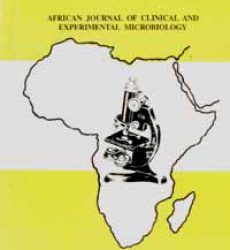Abstract
Objective: The current study evaluated the anti-fungal activities of methanolic extracts of the leaves and fruits of some medicinal plants of health value in Enugu, southeast Nigeria.
Materials and methods: Volumes of the different extracts into molten Sabouraud Dextrose Agar to make up for concentrations of 25 mg/ml, 50 mg/ml and 100 mg/ml respectively. Concentrations of 125 ag/ml, 250 ag/ml and 500 ag/ml of Miconazole were incorporated to serve as a positive control while 0.5 ml of DMSO served as a negative control. The plants extracts employed were from Azadirachta indica (Neem), Anacardium occidentale (Cashew), Euphorbia hirta (Asthma weed),Jatropha curcas (Physic nut), Acantus montanus (Mountain thistle) and Picralima nitida (òsúigwe in Igbo). A 2 mm agar disc cut out from the margin of actively growing cultures of each dermatophyte (Trichophyton soudanense, T.mentagrophytes, Cladosporium sp, T.rubrum and Fusarium sp) were inoculated on the agar plates containing varying concentrations of the different plant extracts, the standard antifungal agent and negative control in triplicates and incubated at 28 ºC.
Results: All the extracts exhibited antifungal activities of varying degrees with radial growth inhibitions (RGIs) ranging from 0-0.45 mm radius. Fifty percent (50 %) of the plants extracts comprising of Picralima nitida, Euphorbia hirta and Acantus montanus exhibited complete inhibition at 100 mg/ml against all the clinical isolates under investigation (p < 0.05). Picralima nitida seed was the only plant extract with complete inhibition at 25 mg/ml against T.soudanense and T.rubrum. Picralima nitida was the closest in activity to miconazole. Azadirachta indica (Neem) did not exhibit complete inhibition against any of the clinical isolates at 100 mg/ml yet exhibited a significantly lower RGI at the lowest concentration of 25 mg/ml better than others.
Conclusion: Antifungal activities showed that leaves extract of fruits plants against the clinical isolates are good source of medicinal applications
Key words: Antifungal agents, medical plants, Enugu, Nigeria.
Download full journal in PDF below
Antifungal properties of methanolic extracts of some medical plants in Enugu, south east Nigeria

